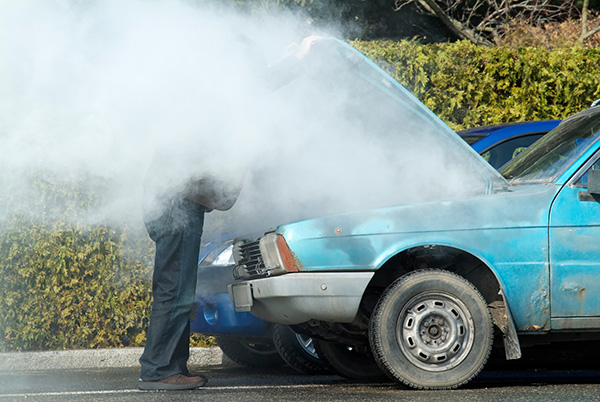
It’s a situation every driver dreads — you’re driving along, and suddenly, your temperature gauge spikes into the red, or worse, steam starts billowing from under the hood. A car overheating is a problem that can escalate quickly, but with the right knowledge, you can handle the situation calmly and avoid major damage to your vehicle. So, what should you do if your car overheats?
1. Recognize the Signs of Overheating
Before you can take action, it’s crucial to recognize the signs that your car is overheating. The most obvious indicator is the temperature gauge on your dashboard climbing into the red zone. You might also notice the warning light for engine temperature flickering on. Steam coming from under the hood is another surefire sign that your engine is too hot.
If your car starts overheating, you might also experience a loss of power or the smell of burning coolant or oil. These symptoms mean it’s time to act fast to prevent further damage to your engine.
2. Pull Over Safely
If you notice that your car is overheating, the first thing you need to do is pull over to a safe location. Continuing to drive with an overheating engine can cause serious damage, like a cracked engine block or blown head gasket. Once you've pulled over, turn off the engine immediately to prevent further heat buildup.
It's tempting to try to push through and get to your destination, but this can be costly in the long run. The sooner you stop the car, the better.
3. Turn Off the Air Conditioning and Turn On the Heater
While it may seem counterintuitive, turning off your air conditioning and cranking up the heater can actually help reduce engine temperature. The heater pulls heat away from the engine and into the car’s cabin. It won’t solve the overheating problem, but it can help reduce the immediate risk of major engine damage while you wait for the engine to cool down.
This is a temporary solution, so don’t use this as a way to keep driving for long. It’s just a measure to help manage the situation until you can get to a safe spot to stop.
4. Check Your Coolant Levels (If Safe)
Once the engine has cooled down (this can take 15–30 minutes), you can cautiously check the coolant levels. Never attempt to open the radiator cap while the engine is still hot. Doing so can result in hot steam and boiling coolant spraying out, which can cause serious burns.
When the engine is cool, carefully open the radiator cap with a towel and check the coolant levels. If the coolant is low, topping it off with water or coolant might be enough to get you back on the road, but only for a short time. This is just a stopgap measure until you can get the car inspected by a professional.
5. Call for Roadside Assistance
If you’re unable to safely address the problem yourself or if adding coolant doesn’t resolve the overheating issue, it’s time to call for roadside assistance. Continuing to drive an overheated vehicle can lead to expensive repairs, and it’s always better to err on the side of caution.
Once your vehicle has been towed to a service center, a technician can properly diagnose and fix the underlying issue. Whether it’s a malfunctioning thermostat, a leaking radiator, or a broken water pump, the problem should be addressed before hitting the road again.
6. Prevent Future Overheating
After your car has overheated once, you’ll want to take steps to prevent it from happening again. Regular maintenance checks are crucial for keeping your cooling system in good working order. Ensure that the coolant levels are always within the recommended range, and have the system inspected for leaks or damage periodically.
It’s also important to replace parts like the thermostat and radiator hoses when they become worn. Many overheating issues arise from neglecting regular vehicle maintenance, so staying proactive can save you a lot of trouble in the future.
Don’t let an overheating car ruin your day. Schedule a quick and professional diagnosis at Import Auto Specialists, and we’ll ensure your vehicle is ready to tackle any journey. Call us today!